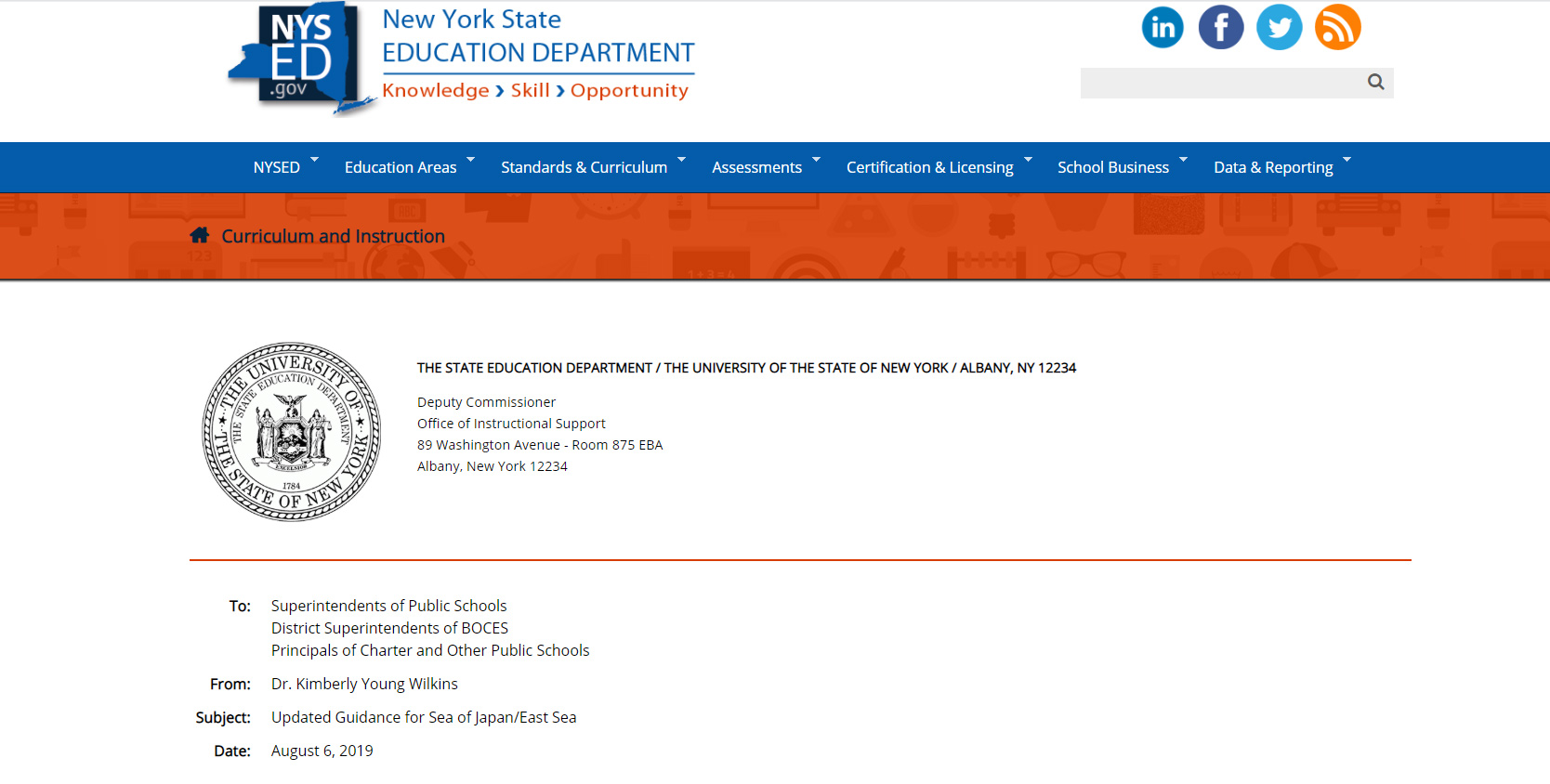
On August 6th of 2019, the New York State Education Department updated a portion of the curriculum involving the East Sea. Initially, there was no specific name that was used for the body of water when it was taught in New York schools. Now, both the names East Sea and Sea of Japan will be used when teaching about the region to promote sensitivity and understanding of historical matters.
The IHO, the International Hydrographic Organization, made the decision in early 2019 that East Sea and Sea of Japan should both be used on world maps and maps of the region until a single name can be chosen. The organization has also urged Japan to resolve the issue with Korea, yet a resolution has not been reached yet. The memo for the NYSED referenced Japanese occupation of Korea from 1910 to 1945 and the Korean War from 1950-1953, both reasons that Korea was not able to participate in the second and third IHO decisions in 1937 and 1953 respectively. This left the Japanese information on the body of water as the most prominent one regardless of the fact that Korean and world maps have displayed East Sea for generations.
Many Korean-Americans live in New York, and groups of Korean-Americans helped fight for the passage of this curriculum update. The Kace Kavc, Korean American Association of Greater New York, Korean American Association of Queens, New York – KAAQ, and the Korean American Parents Association of Greater New York groups and John Park and Mr. Hyungbin Im were are all key players in the fight for this decision. Toby Ann Stavisky announced the change. Previously, the issue of the East Sea’s naming had been brought up in New York, but the change was not approved. The IHO’s decision to include both names and groups’ hard work played large parts in the change. A similar decision was made in Virginia in 2014, before the IHO decision, to include East Sea alongside the Sea of Japan, making the state one of six southern states to include the East Sea in its curriculum. Both of these decisions were opposed by Japan yet still passed by the states.
This comes after the New York decision to make January 14th Yu Gwan-sun Day from 2019 onward. Yu Gwan-sun was a Korean Freedom Fighter during Japanese imperialism in Korea and advocated during the March 1st Movement in Korea. She was imprisoned for her efforts and passed away at the age of 17, ultimately becoming a powerful symbol for Korean freedom.
*Updated Guidance for Sea of Japan/East Sea
http://nysed.gov/memo/curriculum-instruction/updated-guidance-sea-japaneast-sea
